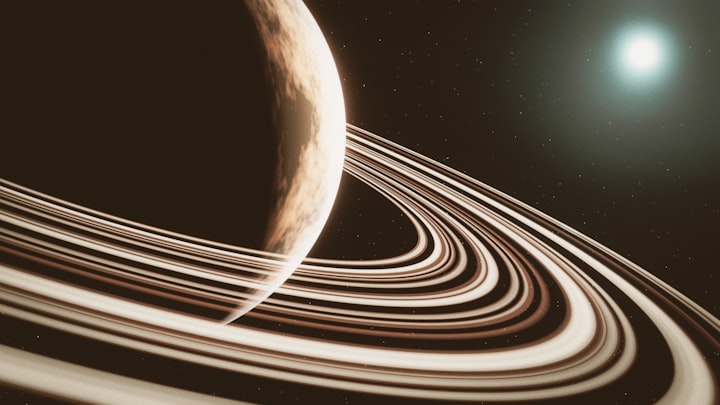The Fascinating Planets in Our Solar System
Including Pluto
Outer space! Astronomy is one of the sciences that has always fascinated me. The planets, the stars all contained in our Milky Way galaxy, the mysteries of what lies beyond our universe, past Pluto. Outer space is full of so many fascinating and infinite wonders.
Each planet is fascinating in its own way. For instance, did you know Uranus rotates on its side?
Mercury
Mercury is the closest planet to the sun and is the smallest planet* in our solar system with a diameter of 3,030 miles or 4,876 kilometers. That’s about the size of the United States and just a little bit larger than our moon. And in comparison to Earth and its diameter, that’s very small!
Mercury is an incredibly fast planet! The fastest in our solar system! Mercury’s orbit around the sun takes just 88 Earth days! That’s just roughly under 3 months!
So, what does the sun look like on Mercury, with the planet being the closest to the sun? Well, try and imagine the sun 3 times the size as you see it on Earth and the sunlight seven times brighter. That’s what the sun would look like on Mercury.
You would think that with it being the closest planet to the sun, Mercury would be the hottest planet in the solar system. I thought for sure it would be, but surprisingly, it is not. That honor goes to the next planet on this list.
Venus
Venus is the hottest planet in our solar system all thanks to its atmosphere which is made up of carbon dioxide and sulfuric acid clouds. Venus’s surface temperature reaches an incredibly hot 900 degrees Fahrenheit or 475 Celsius. That’s hot enough to melt lead! Sounds like quite a formidable place!
One interesting fact about Venus is that since it rotates backward on its axis, sunrises occur in the west and sunsets occur in the east.
And days on Venus are unbelievable long! Ever feel like you had a long day? Well, just one day on Venus is equal to 243 days on Earth! However, perhaps even more peculiar, since Venus rotates around the sun at a faster pace than Earth, days on Venus are longer than a year!
Mars
If there is one aspect of Mars that stands out, it is undoubtedly its rusty red landscape. It isn’t known as “the Red Planet” for nothing! Mars truly is a remarkable planet and is very much like our own Earth to a certain degree. It has its own seasons, polar ice caps, and a day very similar to and not too far off from that of Earth’s — at 24 hours and 37 minutes. However, a year on Mars is significantly longer and nearly twice that of Earth’s at 687 days.
It has two moons — Phobos, which is 13.8 miles, and Deimos, which is a mere 7.8 miles. Just the fact alone that Mars has two moons is fascinating. Sometimes, I wonder how very different our Earth would be if it had two moons?
Mars is the one planet that has been the most explored in our solar system. We have sent a number of Rovers, two being Curiosity and Perseverance to observe the Martian landscape. Mars is also the only planet to which we have been able to send Rovers. I find it absolutely fascinating that scientists have been able to obtain, thanks to the Rovers, actual, real-time photographs of the landscape on Mars. A lander, InSight, and a helicopter, Ingenuity, was also sent out for Mars exploration.
Jupiter
Jupiter is the largest planet in our solar system. Just to comprehend exactly how large Jupiter is, 11 earths would fit comfortably within its equator.
Jupiter’s swirls consist of water and ammonia clouds within a hydrogen and helium atmosphere.
Years on Jupiter are incredibly long and equate to 12 Earth years.

While our Earth has one moon, Jupiter has more than 75 moons! That’s a little unfathomable!
However, perhaps, the most well-known and fascinating fact about Jupiter is its Great Red Spot. This red spot is actually an immense storm, larger than Earth, that has been occurring on Jupiter for well over a hundred years.
Saturn
If there is one aspect that Saturn is known for, it is undoubtedly its rings. As much as I am fascinated by astronomy and the planets in the solar system, I have a hard time deciding which planet I would consider my favorite. After much reflection, I strongly feel that Saturn has made the cut as my favorite planet.
While it isn’t the only planet to have rings (Jupiter, Uranus, and Neptune also have rings), it is still truly a one-of-a-kind and fascinating planet. Its rings are very distinct, unlike other planets’ rings. Saturn has 7 rings which are made up of ice and rock and those pieces of ice and rock that makeup Saturn’s rings are very diverse in size on an almost incomprehensible level from as minuscule as a grain of sand to as massive as a house. You can even observe these rings through a small and simple backyard telescope!
How did Saturn even get its distinct rings? Scientists have speculated that Saturn’s rings are actually fragments of asteroids, pieces of moons, and comets that eventually broke apart due to Saturn’s gravitational pull.
Like Jupiter, Saturn also has a significant number of moons. As far as scientists have confirmed, it has 53 confirmed moons but there most likely might be more. And much like Jupiter, Saturn is unbelievably massive. 700 Earths would fit comfortably inside Saturn!
A day on Saturn is rather short at 10.7 hours while a year on Saturn is unbelievably long equating to 29 Earth years!
Uranus
Going further and further out into the universe and further away from the sun, one is now entering the more mysterious parts of the universe. The further one goes, the more mysteries there are just waiting to be discovered.
Uranus consists of icy components of water, methane, and ammonia.
While nowhere as distinct as Saturn’s, Uranus also has rings. 13 of them as far as we know.
Uranus has 27 confirmed moons.
If there is one thing that makes Uranus distinct from the other planets, it is its odd rotation. Uranus rotates on its side!
Neptune
Like Uranus, Neptune is a rather icy world also composed of water, methane, and ammonia.
As faint and difficult to see as they are, Neptune also has rings — 5 that have been confirmed. Like the other planets with confirmed rings, there likely might be more.
Neptune is by far the windiest planet in our solar system. Winds on Neptune easily surpass 1500 mph!
Neptune is one of the most mysterious planets. The sole spacecraft to have observed Neptune was the Voyager 2 in the summer of 1989.
Pluto
There’s been a lot of debate in regards to whether or not Pluto is a planet. As a planet, *Pluto would be the smallest planet in our solar system smaller than Earth’s moon. However, since scientists have determined that Pluto doesn’t meet the size requirements to be a planet and is therefore disqualified, the smallest planet is now Mercury. Pluto has been downgraded to a dwarf planet.
So how small exactly is Pluto? It is 1,400 miles wide.
Pluto is incomprehensibly cold. -378 to -396 Fahrenheit or -228 to -238 Celsius!
A day on Pluto is unfathomably long equating to 6 Earth days. Think that’s long? Wait until you hear what a year on Pluto is! 248 Earth years! That is absolutely mind-boggling!
Pluto is a rather peculiar and fascinating planet — I mean dwarf planet! It actually snows on Pluto which is a new and interesting fact I did not know until I did some research for this article! However, it isn’t like the snow you and I are used to seeing. Snow on Pluto is red!
Even though Pluto might not be considered an official planet, it will always be one of the 9 planets to me!
All of these planets are fascinating in their own way. Who knows what will be discovered next regarding these planets? But do you know what the most truly fascinating planet in our solar system is? … Earth!

About the Creator
Jasmine Aguilar
Fascinated by pop culture and its effect on society... movies, music, books.. and pretty much anything.
I love writing and write a little bit of everything including a science fiction WIP!
https://www.buymeacoffee.com/J.A.Rose
Reader insights
Outstanding
Excellent work. Looking forward to reading more!
Top insights
Expert insights and opinions
Arguments were carefully researched and presented
Eye opening
Niche topic & fresh perspectives
On-point and relevant
Writing reflected the title & theme
Easy to read and follow
Well-structured & engaging content
Excellent storytelling
Original narrative & well developed characters
Heartfelt and relatable
The story invoked strong personal emotions







Comments
There are no comments for this story
Be the first to respond and start the conversation.